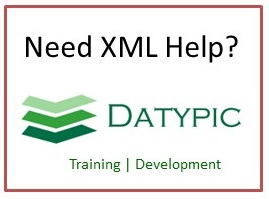LoadResponseCostingActivity
In an effort to simpilify the usage of the verbs the LoadResponseCostingActivity BOD is being deprecated as of OAGIS 9.0, the LoadResponseCostingActivity will still be provided for the next three releases at which time it is scheduled to be removed from OAGIS. As such for all new development we recommend that you use the PostCostingActivity BOD which may serve the same function of the LoadResponseCostingActivity BOD. The purpose of the LoadResponseCostingActivity BOD is to enable the update of Activityinformation from a production or manufacturing application to a costing application. This is necessary for applications that are based on a Dual Cycle Accounting model. This Dual Cycle Accounting model does not capture the details of the Activities that caused entries to be made in the general ledger application, but instead captures them in a separate overall costing application. This BOD commonly causes updates to occur and may be used as part of a large integration scenario or as a single tool for updating data. For Single Cycle accounting systems, the PostJournalEntry BOD will be used to ensure that the costing information flows from the Manufacturing Application to the Financial Application. In most cases either PostJournal or LoadResponseActivity will be used when the Financial applications are included with Logistics, but both Business Service Requests will not be used in the same integration scenario.
Element information
Namespace: http://www.openapplications.org/oagis/10
Schema document: LoadResponseCostingActivity.xsd
Type: LoadResponseCostingActivityType
Properties: Global, Qualified, ID: oagis-id-18bfa3a34e3e4f8a8e8aa2b52b61736d
Content
- Sequence [1..1]
- ApplicationArea [1..1] Provides the information that an application may need to know in order to communicate in an integration of two or more business applications. The ApplicationArea is used at the applications layer of communication. While the integration frameworks web services and middleware provide the communication layer that OAGIS operates on top of.
- DataArea [1..1] Is where the information that the BOD message carries is provided, in this case LoadResponseCostingActivity. The information consists of a Verb and one or more Nouns. The verb (LoadResponse) indicates the action to be performed on the Noun (CostingActivity).
from type BusinessObjectDocumentType
Attributes
| Name | Occ | Type | Description | Notes |
|---|---|---|---|---|
| releaseID | [1..1] | NormalizedStringType | OAGIS Release this BOD Instances belongs or the OAGIS release that the derivative work is based on. | from type BusinessObjectDocumentType |
| versionID | [0..1] | NormalizedStringType | Indicates the version of the given BOD definition. | from type BusinessObjectDocumentType |
| systemEnvironmentCode | [0..1] | SystemEnvironmentCodeContentType | Indicates whether this BOD is being sent in a "Test" or a "Production" mode. If the BOD is being sent in a test mode, it's information should not affect the business operation. However, if the BOD is sent in "Production" mode it is assumed that all test has been complete and the contents of the BOD are to affect the operation of the receiving business application(s). | Default value is "Production". from type BusinessObjectDocumentType |
| languageCode | [0..1] | LanguageCodeContentType | Indicates the language that the contents of the BOD is in unless otherwise stated. | Default value is "en-US". from type BusinessObjectDocumentType |
Sample instance
<LoadResponseCostingActivity releaseID="normalizedString"> <ApplicationArea> <Sender> <LogicalID>normalizedString</LogicalID> <ComponentID>normalizedString</ComponentID> <TaskID>normalizedString</TaskID> <ReferenceID>normalizedString</ReferenceID> <ConfirmationCodes>... </ConfirmationCodes> <AuthorizationID>normalizedString</AuthorizationID> </Sender> <Receiver> <LogicalID>normalizedString</LogicalID> <ComponentID>normalizedString</ComponentID> <ID/> </Receiver> <CreationDateTime></CreationDateTime> <Signature> <!--any element--> </Signature> <ScenarioID>normalizedString</ScenarioID> <CorrelationID>normalizedString</CorrelationID> <BODID>normalizedString</BODID> <Extension> <AnyExtension> <!--any element--> </AnyExtension> <Amount/> <Code/> <DateTime></DateTime> <ID/> <Indicator>true</Indicator> <Measure/> <Name/> <Number>1.0</Number> <Quantity/> <Text/> <Time></Time> <ValueText>string</ValueText> </Extension> </ApplicationArea> <DataArea> <LoadResponse> <OriginalApplicationArea>... </OriginalApplicationArea> <ResponseCriteria>... </ResponseCriteria> </LoadResponse> <CostingActivity> <ID/> <IDSet>... </IDSet> <GLEntityID>normalizedString</GLEntityID> <DocumentDateTime></DocumentDateTime> <LastModificationDateTime></LastModificationDateTime> <ActivityDateTime></ActivityDateTime> <SourceActivity>... </SourceActivity> <Extension>....................................... </Extension> </CostingActivity> </DataArea> </LoadResponseCostingActivity>



